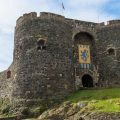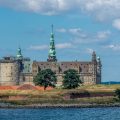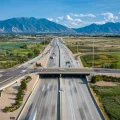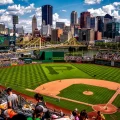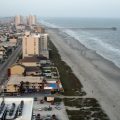The Plaza Mayor of Madrid is a historic and vibrant square that has witnessed a multitude of events throughout its long-standing existence. Located in the heart of the city, adjacent to the modern city center known as Puerta del Sol, the Plaza Mayor is an iconic and must-visit site for anyone exploring Madrid.
Measuring 129 meters in length and 94 meters in width, the Plaza Mayor is surrounded by elegant three-story buildings adorned with picturesque porches that span along the entire plaza. These traditional structures add to the charm and character of the square, giving it a unique and timeless ambiance.
One of the most notable events held at the Plaza Mayor is the annual Christmas market. During the festive season, the plaza comes alive with an array of stalls offering a variety of goods, including handicrafts, decorations, and traditional Spanish delicacies. The market attracts locals and tourists alike, creating a bustling and joyous atmosphere.
However, the Plaza Mayor’s history is not limited to merry celebrations. In the past, it has also served as the site of public executions. This grim aspect of its past stands in stark contrast to the lively market and joyous festivities that now take place within its confines.
In addition to the Christmas market, the Plaza Mayor has been a venue for other diverse events. It has hosted bullfights, a popular Spanish tradition, as well as soccer games that have captivated sports enthusiasts. These events have brought people together, fostering a sense of community and shared experiences.
The Plaza Mayor is also home to a ring of old and traditional shops and cafes located under its porticoes. These establishments offer a unique shopping and dining experience, allowing visitors to immerse themselves in the rich history and culture of Madrid. Whether you are in search of traditional Spanish cuisine or a charming souvenir, the Plaza Mayor’s shops and cafes have something to offer everyone.
Furthermore, the Plaza Mayor plays a significant role in the celebrations for San Isidro, the patron saint of Madrid. Festivities honoring the saint are held here, attracting large crowds of locals and tourists who come to enjoy music, dance, and traditional folklore. These celebrations showcase the vibrant spirit and deep-rooted traditions of the city.
The Plaza Mayor of Madrid is a captivating and historic square that has witnessed a myriad of events throughout its existence. From the annual Christmas market to bullfights and soccer games, the plaza has served as a gathering place for diverse activities that bring people together. Its traditional shops, cafes, and significant role in the celebrations for San Isidro further contribute to its allure. A visit to Madrid would not be complete without experiencing the charm and vibrancy of the Plaza Mayor.
Why Is The Plaza Mayor In Madrid Important?
The Plaza Mayor in Madrid holds significant importance due to its historical significance and its role as a cultural and social hub in the city. Here are some reasons why the Plaza Mayor is important:
1. Historical Significance: The Plaza Mayor has a rich history dating back to its construction in the 17th century during the reign of Philip III. It has witnessed numerous historical events such as royal coronations, public ceremonies, and even executions. The plaza reflects the architectural style of the Habsburg period, showcasing the city’s historical heritage.
2. Cultural Hub: The Plaza Mayor is a vibrant center of cultural activities in Madrid. It has been the venue for various events and celebrations throughout the years. The plaza hosts the traditional annual Christmas market, attracting locals and tourists alike with its festive atmosphere and stalls selling crafts, gifts, and traditional food.
3. Social Gathering Place: The Plaza Mayor is a popular meeting point for locals and visitors. Its spacious layout, surrounded by beautiful buildings, provides a picturesque setting for people to gather, relax, and socialize. The cafes and restaurants lining the square offer a perfect spot to enjoy a meal or a coffee while soaking in the lively ambiance.
4. Architectural Beauty: The Plaza Mayor is renowned for its architectural beauty. The symmetrical design, arcaded facades, and balconies adorned with intricate ironwork create a stunning visual appeal. The Casa de la Panadería, a prominent building in the plaza, showcases impressive frescoes and is an iconic symbol of the square.
5. Event Venue: Over the years, the Plaza Mayor has served as a venue for various events, including bullfights, soccer games, concerts, and cultural festivals. Its large open space and central location make it an ideal location for hosting such events, attracting people from all walks of life.
The Plaza Mayor in Madrid is important due to its historical significance, cultural relevance, social gathering place, architectural beauty, and its role as a versatile event venue. It stands as a symbol of Madrid’s rich history and vibrant cultural heritage.
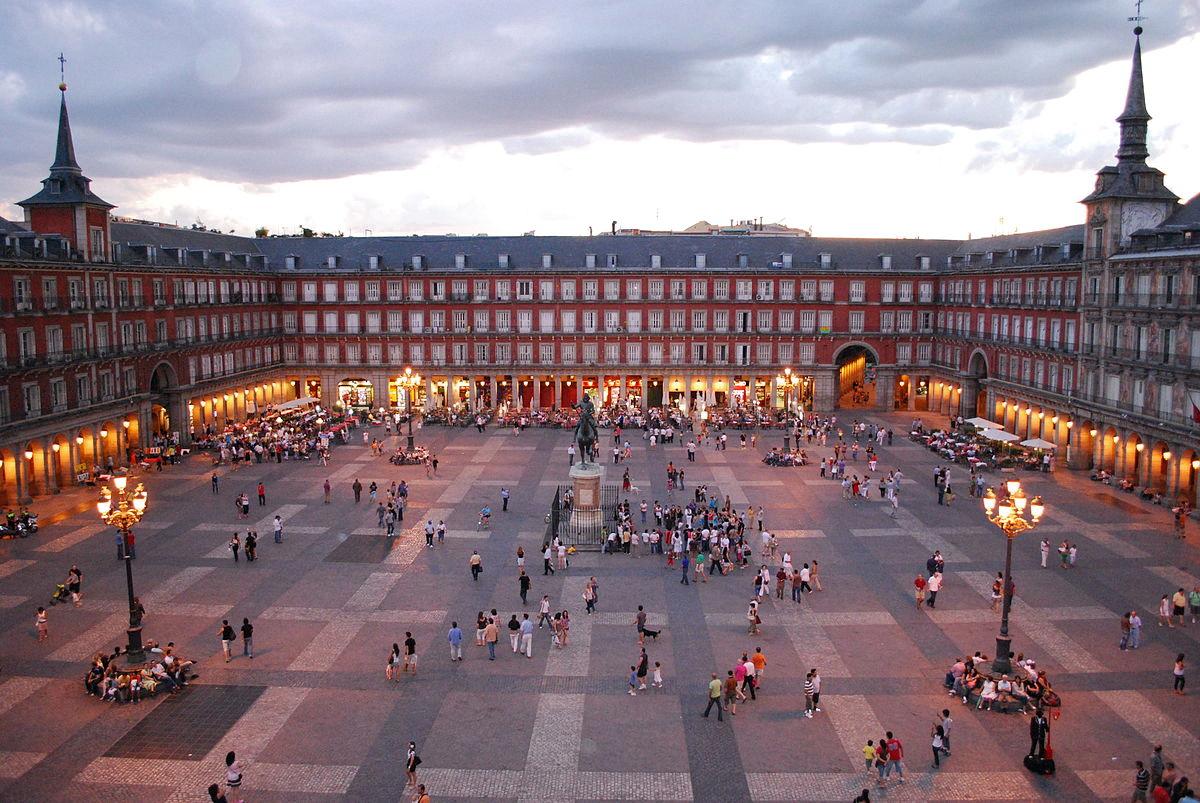
What Happens At Plaza Mayor Madrid?
Plaza Mayor in Madrid is a vibrant and historic square that serves as a venue for a wide range of events and activities. Here is a detailed overview of what happens at Plaza Mayor:
1. Markets: Plaza Mayor is known for hosting various markets throughout the year, including the popular Christmas Market. These markets offer a wide array of goods such as handicrafts, clothing, accessories, and traditional food items.
2. Bullfights: In the past, Plaza Mayor has been a venue for bullfighting events. While the popularity of bullfighting has declined in recent years, the square has witnessed numerous bullfights, attracting both locals and tourists.
3. Soccer games: Plaza Mayor has also been utilized as a space for soccer games, providing a unique and lively atmosphere for fans to gather and cheer for their favorite teams. These games often draw large crowds, creating an electric atmosphere.
4. Public executions: In the past, Plaza Mayor was a site for public executions. These executions were held as a form of punishment and served as a deterrent for criminal activities. However, this practice has ceased, and Plaza Mayor now stands as a reminder of its historical significance.
5. Traditional shops and cafes: The perimeter of Plaza Mayor is lined with old and traditional shops and cafes. These establishments offer a range of products and culinary delights, allowing visitors to explore and experience the local culture and flavors.
6. San Isidro celebrations: Plaza Mayor is a focal point for celebrating San Isidro, the patron saint of Madrid. Festivities include processions, music performances, traditional dances, and religious ceremonies. The square becomes a hub of activity during this time, attracting both locals and tourists who come to partake in the festivities.
Plaza Mayor is a dynamic and multifaceted space that accommodates a variety of events and activities. Whether it’s markets, bullfights, soccer games, historic executions, traditional shops, or festive celebrations, Plaza Mayor offers a rich and diverse experience for all who visit.
Is The Plaza Mayor In Modern Madrid?
The Plaza Mayor is indeed located in modern Madrid. It is situated right beside the city center, known as Puerta del Sol. The plaza is a significant historical and cultural site in the city and is a must-visit for tourists and locals alike.
Here are some key points about the Plaza Mayor in modern Madrid:
– Location: The Plaza Mayor is situated in the heart of Madrid, making it easily accessible and a central meeting point for locals and visitors. It is located just a short distance from other popular landmarks such as Puerta del Sol, Gran Via, and the Royal Palace.
– History: The plaza has a rich history that dates back to the 15th century when it was originally known as the Plaza del Arrabal. Over the years, it has undergone various transformations and renovations, becoming the iconic square it is today.
– Architecture: The Plaza Mayor is known for its stunning architectural design. It features a rectangular shape with uniform buildings surrounding it, adorned with beautiful balconies and arcades. The most prominent building within the plaza is the Casa de la Panadería, which is known for its vibrant frescoes.
– Function: Throughout its history, the Plaza Mayor has served multiple purposes. It has been a marketplace, the site of royal coronations, bullfights, and even public executions. Today, it is primarily a public square where people gather to enjoy leisurely walks, dine at outdoor cafes, and soak in the vibrant atmosphere.
– Events and Festivals: The Plaza Mayor is a popular venue for various events and festivals throughout the year. One of the most notable events is the Christmas market, where stalls are set up selling decorations, gifts, and traditional holiday treats. The plaza also hosts concerts, art exhibitions, and cultural celebrations.
The Plaza Mayor is a famous site located in modern Madrid. Its central location, rich history, stunning architecture, and vibrant atmosphere make it a must-visit destination for anyone exploring the city.
Why Is It Called The Plaza Mayor?
The Plaza Mayor is called so because it is the main square in Madrid. The term “Plaza Mayor” translates to “Main Square” in English.
The name reflects the significance and central location of this square in the city. It serves as a focal point for various activities, events, and gatherings in Madrid. The Plaza Mayor has been a hub of social, cultural, and political life throughout history.
Here are some key points about why it is called the Plaza Mayor:
1. Historical Importance: The Plaza Mayor has a rich history dating back to the 15th century. It has witnessed numerous historical events and has been a witness to the growth and development of Madrid over the centuries.
2. Central Location: The Plaza Mayor is situated in the heart of Madrid, making it easily accessible and a natural meeting point for locals and tourists alike. Its proximity to other important landmarks, such as Puerta del Sol and the Royal Palace, adds to its significance.
3. Architectural Significance: The square is surrounded by three-story buildings with porches, which give it a unique and distinctive look. The architectural design of the Plaza Mayor has been carefully preserved and remains a symbol of Madrid’s heritage.
4. Cultural Significance: The Plaza Mayor has been a gathering place for various cultural events, festivities, and markets throughout history. It has hosted bullfights, royal processions, and religious celebrations, making it an integral part of Madrid’s cultural identity.
The Plaza Mayor is called so because of its historical, central, architectural, and cultural importance in Madrid. It stands as a testament to the city’s rich heritage and continues to be a vibrant and bustling square in the heart of the Spanish capital.
Conclusion
Plaza Mayor in Madrid is a historic and vibrant square that holds significant cultural and historical importance. Its central location and iconic status make it a must-visit destination for tourists and locals alike. The square has witnessed a plethora of events throughout its existence, ranging from public executions and bullfights to lively markets and sporting events.
The annual Christmas market held in Plaza Mayor adds a festive atmosphere to the square, attracting visitors from all over the world. Additionally, the traditional shops and cafes under the porticoes offer a glimpse into the city’s rich heritage and provide a charming setting for visitors to relax and soak in the ambiance.
Celebrations for San Isidro, the patron saint of Madrid, are also held in Plaza Mayor, further highlighting its cultural significance. The square’s architecture, with its three-story buildings and porches, adds to its grandeur and beauty, creating a picturesque backdrop for any event or gathering.
Plaza Mayor is a symbol of Madrid’s history, culture, and community. It serves as a meeting point, a venue for celebrations, and a place where visitors can immerse themselves in the vibrant atmosphere of the city. Whether you’re interested in history, shopping, or simply enjoying the lively ambiance, a visit to Plaza Mayor is an essential part of experiencing the true essence of Madrid.

